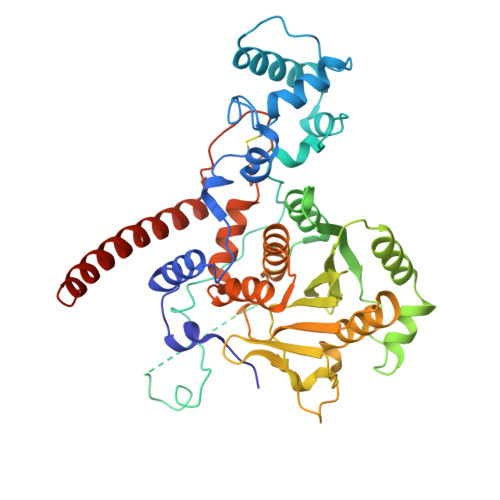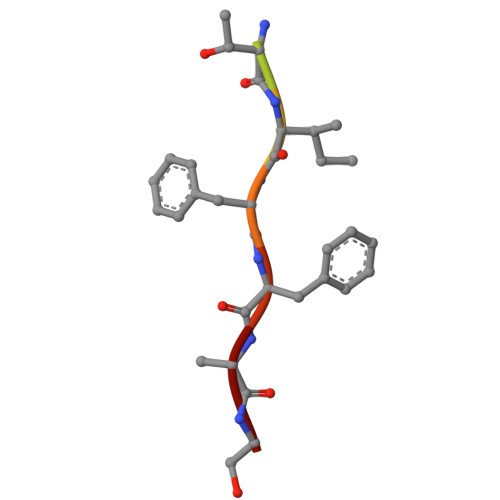Substrate recognition and cleavage mechanism of the monkeypox virus core protease.
Gao, Y., Xie, X., Zhang, X., Cao, J., Lan, W., You, T., Li, D., Dong, X., Dai, W., Xiang, Y., Hu, S., Shang, W., Wu, B., Zhang, Y., Xu, J., Liu, X., Wang, H., Hu, W., Zhang, M., Duan, Y., Cui, W., Zhou, H., Mao, S., Jia, H., Sun, Z., Jia, M., Yin, Y., Nguyen, H.C., Yang, K., Yang, B., Yang, X., Ji, X., Xiao, G., Wang, W., Zhang, L., Rao, Z., Liu, H., Yang, H.(2025) Nature
- PubMed: 40262633
- DOI: https://doi.org/10.1038/s41586-025-09014-x
- Primary Citation of Related Structures:
9JAL, 9JAM, 9JAN, 9JAQ, 9KQV, 9KR6 - PubMed Abstract:
Poxviruses cause severe diseases, including smallpox and mpox, that pose major threats to human health. The poxvirus core protease (Core Pro ) is essential for viral maturation and is highly conserved in poxviruses, making it an attractive antiviral target 1 . However, the structure of Core Pro remains unknown, hampering antiviral development. Here we determined the apo structure of monkeypox virus (MPXV) Core Pro and the structure of Core Pro in a complex with the inhibitor aloxistatin, a drug candidate for muscular dystrophy 2 . These structures show that Core Pro forms a homodimer that features a unique 'dancing couple' fold. The catalytic intermediate state of Core Pro was characterized by an aldehyde derivative from a natural substrate (I-G18). This derivative binds covalently to the catalytic Cys328, shifting the active site of the viral protease from a closed conformation in the apo form to a favourable open conformation upon substrate binding. On the basis of the Core Pro -I-G18 complex, we designed a series of peptidomimetic inhibitors with a nitrile warhead, which could covalently anchor with the catalytic Cys328. These compounds inhibit Core Pro with half-maximal inhibitory concentrations of 44.9-100.3 nM, and exhibit potent and broad anti-poxvirus activity. Our studies provide a basis for designing wide-spectrum inhibitors against poxvirus infections.
Organizational Affiliation:
Shanghai Institute for Advanced Immunochemical Studies and School of Life Science and Technology, ShanghaiTech University, Shanghai, China.

















